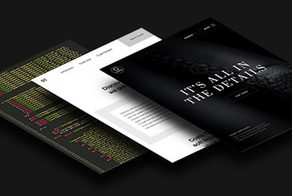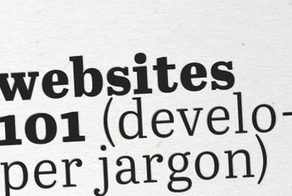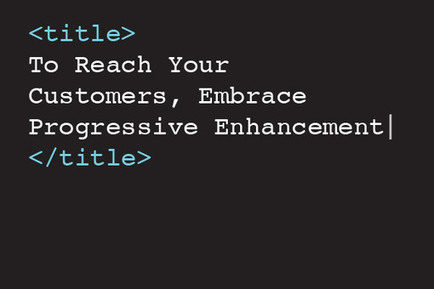Digital Platforms
Web development is a fluid craft that changes frequently. The Wray Ward digital team constantly monitors the latest innovations and adopts those that can make a positive impact on our customers’ web products.
2017 saw incredible advancements related to web product speed. Here are a few benefits of sophisticated web development tools and techniques:
- Improved search rankings: Search engine companies are fairly secretive regarding ranking criteria, but it’s clear that performance products lead to higher search rankings and results.
- Increased conversions: Studies have shown that for every one-second increase in speed on a web product, conversions on that product increase 7 percent.
- Lower overhead: Server storage is relatively cheap these days, but more sophisticated websites equal reductions in code and image weight, in turn further lowering customers’ storage overhead costs.
- The best customer experience: In our eyes, this should always be the number one goal — and greater speed and performance are key to making it happen.
These five tools can make your website faster and grow your bottom line.
1. Pure JavaScript
We prefer to create JavaScript written in the core language, and our stack eliminates the use of as many third-party libraries as possible. The benefits are twofold: boosted performance and reduced dependency on code we didn't write. Of course, we continue to use some libraries; we carefully vet these for size, speed and compatibility before introducing them to our stack. We also create that JavaScript code using the latest, next-generation version of ECMA Script (the programming language body behind JavaScript), known as ES6. This version provides speed advantages and is future-proofed for the foreseeable future.
2. PHP 7
PHP is the backend language (code that runs on the server) we employ for our stack. The next-generation version, PHP 7, represents a large jump from the legacy versions now in use on more than 75 percent of the world's websites and apps, providing a substantial jump in performance and speed. PHP 7 benchmarks indicate that process execution times are twice as fast as previous versions, with 30 percent lower memory consumption. Additionally, servers running PHP 7 will be able to serve up to three times as many concurrent requests compared to previous versions.
We are rolling out PHP 7 support to our upcoming product releases, and it will be the standard version on our products moving forward. Customers can rest assured that their digital property will remain secure and perform at a high level.
3. HTTP2
Since the humble beginnings of the public internet, HTTP (Hypertext Transfer Protocol) has served as the standard protocol (networking language/system that controls communication between the web product and the browser or app). However, HTTP is limited to 10 concurrent downloads at a time from any website or app the user accessed. Think of this as a pipe that limits the flow of information at any given time, to allow fair distribution of possibly limited bandwidth among users of the same connection.
Beginning in late 2016, web hosts began to roll out support for HTTP2, the next generation of this protocol standard. This updated protocol can send an entire collection of images and videos, JavaScript files, CSS stylesheets and HTML markup in one request with a really large pipe (and a lot of pressure), greatly increasing delivery speed.
Web security is a major concern in this digital age. And as a bonus, HTTP2 requires SSL Certificates (Secure Socket Layer Certificates, an extra scrutinized and digitally verifiable security marker). This gives web products extra security against attacks and unintended downtime and improves performance.
4. Craft 3
Craft CMS by Pixel & Tonic is our preferred content management system (CMS), the system that allows users to update and change a product. We love Craft, a top-of-the-line, PHP-based system. Pixel & Tonic's latest version of Craft, Craft 3, will be available to the public in April 2018; meanwhile, our team has been exploring the latest beta release versions, and we can’t wait to start rolling out products powered by Craft 3 in the summer of 2018.
Craft 3 is a complete rewrite of the system. Speed and performance are topline goals, and the new version certainly delivers. Benchmark tests show that Craft 3 provides a 230 percent improvement over Craft 2 running on PHP 5, and a 70 percent improvement over Craft 2 running on PHP 7 for Time to First Byte tests (the average time to load the first visible instance of a site). Craft 3 also provides huge improvements on query speed (the time it takes to collect information from the database) and memory consumption (the amount of processing power that is used for a particular task). This improves queries by an impressive 500 percent over Craft 2 running on PHP 7; it also delivers an outstanding 600 percent improvement in memory consumption over Craft 2 running on PHP 5.
5. WebP and other new image formats
Images are the majority of the assets that make up a web program. Today's online media experiences demand rich and vibrant visuals, requiring a large portion of the bandwidth pipeline. And for years, developers have been working on ways to whittle away at image size while preserving quality.
This year marked the introduction of several new image file types specifically designed for web product use. These new formats focus on achieving the smallest possible file size and highest quality visual, while offering additional benefits like custom meta information, Alpha-channel semi-transparency, animation and cinema-graph support.
These file types naturally support a better browsing experience: smaller, higher-quality files allow customers to enhance their web programs with rich imagery while maintaining and exceeding the best speed benchmarks. As a bonus, smaller file sizes also result in smaller file storage requirements and lower bandwidth costs. As browser support for these new image formats is added, our development team will integrate them into our web product development process, ensuring that our customers’ products deliver the highest quality and fastest experience possible for their users.
But how can these tools help your bottom line? The answer is simple: faster products equal happier customers. And in an age where everyone demands everything in an instant, you will be left behind if your product doesn't perform quickly and flawlessly.
Can we help you increase your bottom line with an improved web product? Contact us.


